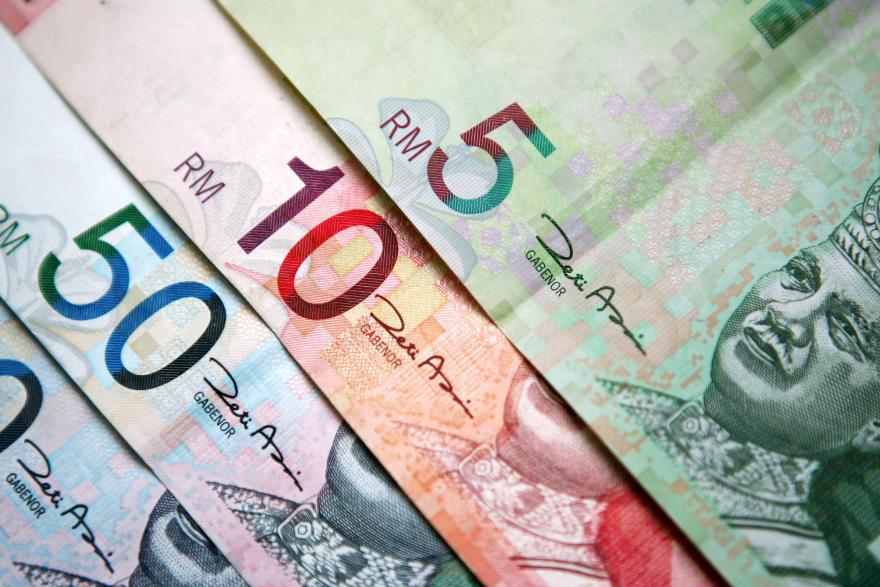THE Malaysian ringgit has slumped against the US dollar to a level not seen since the Asian financial crisis – a quarter of a century ago. Against the Sing dollar, it has also hit fresh lows repeatedly over the past year.
As the beleaguered currency headed dangerously close to its all-time low of 4.885 against the USD in January 1998, Bank Negara Malaysia (BNM) governor Abdul Rasheed Ghaffour issued a statement blaming “external factors”.
“The current level of the ringgit does not reflect the positive prospects of the Malaysian economy going forward,” he said.
To be fair, the ringgit is not the only underperforming Asia currency – but none has suffered such a severe retreat.
BT speaks to analysts to find out what’s causing the ringgit’s slide and what’s in store for it in the near to medium-term:
WHAT’S HOLDING DOWN THE CURRENCY
Some factors battering the currency:
- A strong greenback from robust US economy
- Interest-rate gap with US
- Weakening commodity prices
- Rising external debt
- Exports slide and the China factor
Maybank head of FX research Saktiandi Supaat said the USD is being bolstered by the higher-for-longer rate environment.
In the near term, the greenback is also boosted by the uncertainty of when the Fed will start rolling out rate cuts, said Michael Wan, MUFG’s senior currency analyst.
“The Fed certainly wants to cut rates as inflation has shown progress… but the resilient US economy thus far gives them space to be slow and methodical in doing so,” he said. “High US interest rates have also increased the relative returns of US assets against Malaysia assets, and at the margin increases some depreciation pressure on the ringgit.”
“Inflation in Malaysia is relatively benign at 1.5 per cent, compared to concerns of inflation in the US where inflation was at 3.4 per cent,” he said, pointing out that this has led to USD-MYR trading higher.
In addition to these external factors, Bank of Singapore senior currency strategist Sim Moh Siong said tailwinds from increased tourism and foreign direct investment have yet to offset Malaysia’s interest rate disadvantage against the US to materially lift exporter conversion trends.
The overall bleak global outlook, as well as Malaysia’s weak growth numbers, has also weighed on the ringgit, analysts said.
“Though the January export numbers show a rebound, exporters are holding back more of their foreign currency receipts to take advantage of the higher yield,” said Khoon Goh, head of Asia research at ANZ.
In particular, China’s sluggish growth and poor sentiment has resulted in a weaker Chinese yuan, which has in turn added depreciation pressure on the ringgit. China has been Malaysia’s largest trading partner since 2009, with a 17.1 per cent share of Malaysia’s total trade.
“We note that the Malaysia ringgit followed the movements of the Chinese yuan more closely compared to other Asian counterparts, especially in the weakening phase of the latter last year,” said UOB senior FX strategist Peter Chia.
At the same time, notwithstanding uncertainties in the Middle East, both palm oil and oil prices have been relatively weak, MUFG’s Wan said.
A LITTLE HISTORY
To understand the ringgit’s journey, a little history may be instructive.
In 1998, at the peak of he Asian financial crisis, several Asian currencies went into free fall. Then prime minister Mahathir Mohamad took the shock decision to impose capital controls and pegged the ringgit at 3.80 to the US dollar.
Singapore was then the main offshore centre for ringgit-based trading and deposits. All ringgit funds held offshore had to be repatriated to Malaysia within one month, or else be declared worthless.
The trading of Malaysian shares on the Central Limit Order Book (Clob) – the secondary market in Singapore that traded Malaysian stocks – was also frozen, resulting in huge losses by 172,000 Singaporean investors.
Though described by many as “economic heresy”, the move did stabilise the ringgit and Malaysia only ended the peg in 2005. With capital controls no longer considered crazy, the idea has resurfaced in recent times amid the ringgit bashing. Late last year, Mahathir suggested reviving the currency peg.
But analysts believe circumstances are different now.
TOWARDS RECOVERY
- Greenback pullback
- Global soft landing
- Momentum in Malaysian economy
- Tourism recovery, better exports
- Easing of global inflation
“We expect the USD to weaken once the US Federal Reserve eventually cuts rates, providing a respite for the ringgit,” said ANZ’s Goh. “Some of the drivers of ringgit weakness are temporary,”
Maybank’s Saktiandi said this is in line with his base case scenario for the year: a global soft landing and a gradual softening of the USD.
UOB’s Chia added that the ringgit’s links with the yuan is a double-edged sword that may act in its favour this year, as he expects the yuan – and hence the ringgit – to stabilise and subsequently rebound this year.
The much-anticipated semiconductor recovery could also give the ringgit a boost, since Malaysia is also a key exporter of manufactured goods, including electronics, said MUFG’s Wan.
Early this week, Malaysia’s Second Finance Minister Amir Hamzah Azizan told state news agency Bernama in an interview that the country was “reacting to a very different scenario and a very different financial capacity of the country” back in 1998.
“Today, when you look at the country’s reserves, the debt exposure and the financial liquidity in the market, Malaysia does not need to peg its currency,” he said.
“Moreover, the Fed has signalled that they are going to end the interest rate hikes, so let the currency adjust back as these elements go through.”



